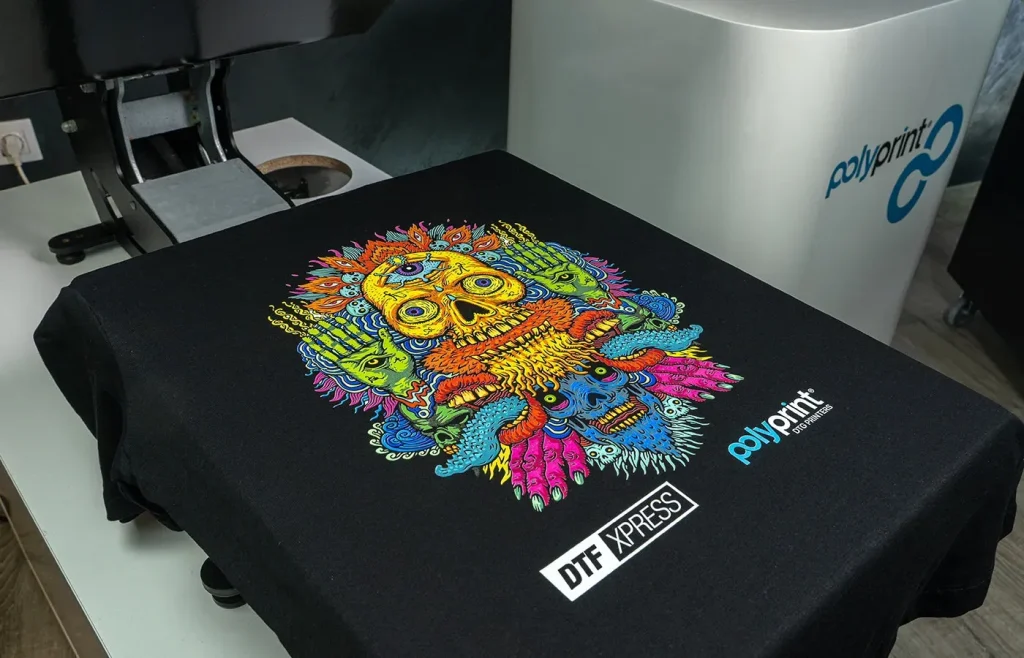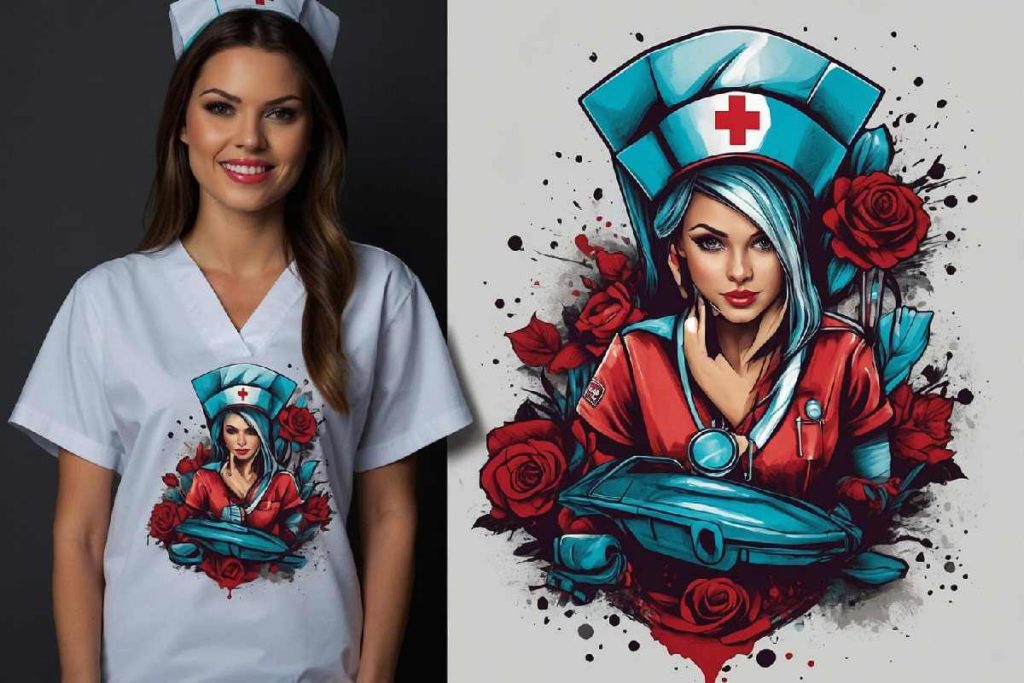In the ever-evolving world of printing, DTF printing, or Direct-to-Film printing, has emerged as a game changer for textile manufacturers and creatives alike. This innovative printing technology transfers stunning designs onto various fabrics, providing unmatched color vibrancy and detail. Unlike traditional methods such as screen printing and Direct-to-Garment (DTG), DTF printing excels in balancing cost efficiency and production speed, making it an attractive option for both small businesses and larger operations. As the demand for high-quality, custom prints continues to rise, understanding the benefits of DTF printing has never been more crucial. In this article, we will explore how this process outshines its competitors and revolutionizes the way we think about fabric printing.
Direct-to-Film (DTF) printing, often regarded as a breakthrough in textile printing technology, offers designers the capacity to create vibrant, durable designs that resonate with modern consumer demands. This method, which facilitates the application of intricate artwork to fabrics via a film transfer process, presents a compelling alternative to traditional printing techniques like screen printing and Direct-to-Garment applications. With its focus on efficiency and high-quality output, DTF has quickly gained popularity for its adaptability and precision. As we delve deeper into the nuances of DTF, we will highlight its advantages, such as superior production speed and cost-effectiveness, positioning it as a leading choice for businesses looking to enhance their printing capabilities.
Understanding DTF Printing: A Modern Marvel
Direct-to-Film (DTF) printing represents a significant advancement in the textile printing landscape, combining the best attributes of modern technology to meet the intricate demands of today’s fashion and merchandise sectors. At its core, DTF printing utilizes a specialized film to accurately transfer designs onto various fabrics, producing vivid colors and intricate designs that can captivate customers. This method transcends traditional printing techniques by allowing for a wide range of materials to be adorned with personalized graphics, effectively broadening the creative possibilities for designers.
Moreover, the process of DTF printing is lauded for its efficiency and speed, marking a notable shift in the approach to printing on fabric. With the ability to handle multiple colors in one pass, DTF significantly reduces the time spent on setup compared to traditional methods like screen printing. While the latter may require extensive preparation for each color, DTF allows for quicker turnarounds, making it particularly valuable for businesses that prioritize rapid delivery of custom prints.
DTF vs. DTG: The Quality Showdown
When comparing Direct-to-Film (DTF) printing with Direct-to-Garment (DTG) printing, distinct differences emerge in terms of print quality and durability. While DTG is renowned for its ability to produce exceptionally high-resolution images, it often struggles with longevity, particularly on synthetic fabrics. In contrast, DTF printing excels in producing designs that not only boast vibrant colors and detailed graphics but also demonstrate superior endurance against washing and general wear and tear. This adds a critical layer of value for businesses looking to invest in long-lasting apparel.
Another factor to consider is the type of garments being printed on. DTF allows for a wider variety of fabric options, unlike DTG which is primarily suited for natural fibers like cotton. This flexibility enables manufacturers to cater to diverse client demands without compromising on quality. As a result, DTF emerges not only as a competitive alternative to DTG but also positions itself as a top choice for businesses needing both quality and durability in their printed apparel.
Cost Efficiency: Evaluating DTF against Screen Printing
Cost efficiency is a vital consideration for businesses choosing between DTF and traditional screen printing methods. One of the standout advantages of DTF printing is its lower startup costs, making it an attractive option for small businesses and custom print shops. Unlike screen printing, which requires significant investment in screens for each color, DTF operates on a simpler, more streamlined process that can save both time and money for minor orders—essentially eliminating the financial barrier of entry for attracting diverse clientele.
However, it’s essential to analyze the economic implications for larger production runs. For extensive orders, screen printing often outshines DTF in terms of reduced costs per unit, as the fixed setup cost benefits from economies of scale. Hence, businesses must weigh their specific print volume against cost implications, ultimately choosing a method that aligns with their operational needs while maintaining profitability.
The Production Speed Advantage of DTF Printing
When it comes to production speed, DTF printing showcases its competitive edge over traditional printing methods. The ingenious design of DTF technology allows multiple colors to be printed simultaneously on a single film, drastically reducing the setup time that screen printing requires for each color in a design. This innovation enables swift turnarounds, empowering businesses to meet tight deadlines and customer demands for quick delivery.
In addition to speeding up production, DTF minimizes downtime associated with equipment setup and cleanup, further enhancing operational efficiency. As businesses increasingly shift towards on-demand printing models, the rapid output capabilities of DTF printing become invaluable. Companies can adapt seamlessly to market trends without the extensive lead times usually associated with conventional printing methods, making DTF a game-changer in fast-paced industries.
Technological Advancements in DTF Printing
The landscape of DTF printing is rapidly evolving, driven by continuous technological advancements that enhance its capabilities. Innovations in ink formulations and transfer adhesives have resulted in improved color vibrancy and durability, positioning DTF as a front-runner within the textile printing sector. These enhancements not only ensure established quality standards but also encourage broader acceptance across various markets due to increased reliability.
Furthermore, technical improvements in the printing process itself have made DTF more accessible to businesses of all sizes. As manufacturers invest in advanced DTF printers, the entry barrier lowers, allowing smaller custom print shops to offer high-quality, competitive prints. This democratization of printing technology is essential as it supports burgeoning entrepreneurs seeking to carve out their niche in the textile industry.
Market Trends and the Future of DTF Technology
As we look ahead, the trajectory of DTF printing appears promising, with trends showing steady growth among businesses adopting this innovative printing technology. The allure of affordability combined with adaptability makes DTF increasingly popular among small businesses and custom shops, allowing them to provide personalized products that cater to evolving consumer preferences. This adaptability is crucial as more customers gravitate towards unique, bespoke items rather than mass-produced alternatives.
Moreover, industry forecasts suggest that the demand for DTF printing will continue to rise as it embraces new technological developments and shifts in market expectations. Its ability to meet customer demands rapidly, paired with the capacity to print on diverse materials, creates a robust future for DTF printing. As the competitive landscape continues to evolve, businesses that can effectively capitalize on these trends will be well-positioned to thrive.
Frequently Asked Questions
What are the primary advantages of DTF printing over screen printing?
DTF printing stands out over screen printing due to its cost efficiency and ability to produce detailed designs quickly. While screen printing requires individual screens for each color—making it less economical for small orders—DTF uses a single transfer process that reduces setup costs and time, allowing for rapid production and high-quality outputs on various fabrics.
How does DTF printing compare to Direct-to-Garment (DTG) printing in terms of durability?
When it comes to durability, DTF printing typically surpasses Direct-to-Garment (DTG) printing, particularly on synthetic materials. DTF’s superior adhesion ensures that prints can withstand washing and wear better than DTG prints, making DTF a preferred choice for items that experience regular use.
Is DTF printing more cost-efficient than other printing technologies?
Yes, DTF printing is generally more cost-efficient than screens printing, especially for smaller runs. Unlike screen printing, which incurs higher setup costs for each color, DTF printing requires fewer resources for setup and allows for more versatile designs without escalating costs, making it ideal for both small and large orders.
What printing materials are compatible with DTF printing technology?
DTF printing technology is versatile and can be used on a wide range of materials, including cotton, polyester, and blends. This compatibility allows for vibrant, high-quality prints that cater to diverse fabric types, making DTF suitable for various textile applications.
How fast is the production speed of DTF printing compared to other printing methods?
DTF printing boasts a faster production speed compared to both screen printing and Direct-to-Garment (DTG) printing. It allows multiple colors to be printed simultaneously in one transfer, significantly reducing setup times and enabling quicker turnaround for custom orders, which is essential in today’s fast-paced market.
What recent advancements are improving DTF printing technology?
Recent advancements in DTF printing technology include innovations in transfer adhesives and ink formulations. These improvements enhance color vibrancy and durability in wash tests, making DTF printing increasingly appealing for businesses seeking high-quality, enduring textile solutions.
| Key Aspects | DTF Printing | DTG Printing | Screen Printing |
|---|---|---|---|
| Process | Transfers designs using film and heat. | Directly prints on garments. | Uses screens to transfer ink. |
| Quality and Durability | Superior adherence, vibrant colors, especially on synthetic fabrics. | High resolution but less durable compared to DTF. | Best for large runs, but intricate designs suffer in quality. |
| Cost Efficiency | Lower setup costs for small orders; economic for customization. | More expensive for small batches due to setup. | Cost-effective for larger orders; lower per-unit cost. |
| Production Speed | Fast production with multi-color capability in one pass. | Slower due to individual printing for each color. | Most time-consuming due to screen setup for each color. |
| Current Trends | Growing market presence, favored for customization and affordability. | Traditional preference remains strong but niche oriented. | Established method for bulk production; less flexibility for customization. |
Summary
DTF printing has emerged as a cutting-edge solution in the textile industry, standing out for its ability to deliver vibrant, high-quality designs rapidly and cost-effectively. As businesses seek to enhance their printing capabilities, DTF offers distinct advantages in terms of versatility and durability compared to traditional methods such as Direct-to-Garment and screen printing. The technology’s potential for customization and innovative advancements positions it as a transformative force in the marketplace, ideal for fulfilling the dynamic needs of modern consumers.



